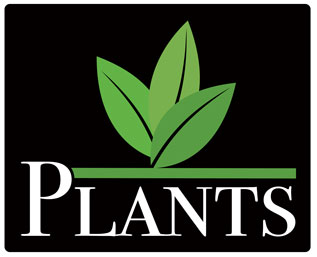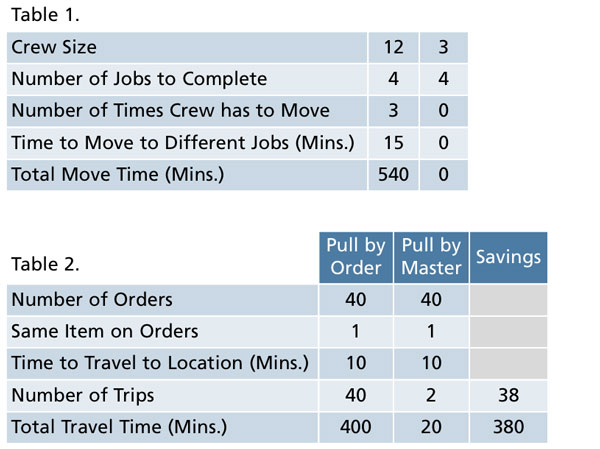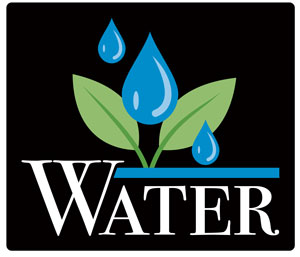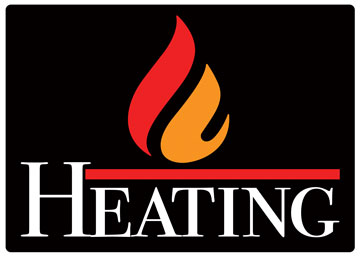5/1/2019
Back to Basics
Jennifer Zurko

Kris Carlsson, Product Manager for Ball FloraPlant, and Todd Cavins, Technical Services Specialist for Ball Seed
The common inputs (water, heating, labor, etc.) may be what you automatically think about when you’re looking to find ways to save a little time/money. But the final product—the plants themselves—can also provide some money-saving solutions. Kris and Todd offered some suggestions on what you should be doing before and during production.
• Choose the plants you grow carefully. You don’t have to be a plant breeding expert, by any means, but do your homework on genetics, focusing on the characteristics and benefits of each varieties/series.
“Most companies are trying to create small, medium and large habits within each crop,” said Kris. “With the idea that you want to save on costs, you need to be able to grow calibrachoa, for instance, really close together and not actually space it. We have better genetic sources in a Conga than probably a Cabaret if you’re not going to space a quart calibrachoa. We position Conga as a quart so that it creates an option for you to save money and not have to space.”
This is especially true when you’re looking for something that works best in your area of the country, for your customers and, eventually, for the end consumer.
“It’s beyond novelty,” said Kris. “Often you go to CAST and it’s all about the new, and we include that, however if you look at a lot of our introductions, we’re targeting grower solutions on saving costs or making production easier.”
The genetics are important, but so is getting them at the right time. You don’t want to have to sit on product or rush it out the door because it takes a lot of resources in almost every input category—pushing it requires extra heat; holding it requires extra PGRs, pesticides and time on the bench.
“Don’t order your tomatoes to have the seedlings arrive in January when you’re not going to be able to sell them until April 15 unless you’re trying to put fruit on them,” said Todd. “Don’t get your vinca so early if they’re not going to perform for your customers until May. Having vinca ready to sell April 1 sounds like a good idea, but are your customers going to be buying it at that time?”
• So make sure the person placing the orders is knowledgeable. It’s vital that the one who’s in charge of ordering and inventory knows when the products need to be ordered and which suppliers they should be coming from. Todd said that you need to make sure the person growing, the person ordering and the person selling the product are in constant communication to avoid any preventable issues.
• Make sure you have the support. Having access to technical growing help—whether it’s through the breeding company, distributor, sales rep, extension specialist, etc.—that’s reliable and trustworthy can make the difference, especially if you have nutrition or pest issues. Or if you’re trying a crop that’s totally new to you, being able to talk to someone who knows it well prevents loss and allows for first-time success.
Actually, you should have most of the technical information before the crop even arrives, said Todd, so that you have everything ready to go when it arrives, such as PGRs and fertilizer inputs, and knowing what your water quality (see page 47) and soil pH is.
• Product form may make a difference. Specific forms can help take the complexity out of your production. Using callused geranium liners, like Genesis for example, ensures that every single color in the series will root at the same time, leaving that headache to the supplier. Or having liners supplied in strips that are easily transplanted using automation, like AutoStix or ISO, can save on time and labor.
• Use the right-sized container. Seems like a “duh,” but Todd said he still sees growers using the wrong pot, so make sure the container you choose matches the plant and its growth habit.
“If you take Ball FloraPlant’s verbena and put them all in a 4-in. pot. that will work great for Cadet and Firehouse, but EnduraScape is a huge landscape plant. It needs at least a 6-in. pot, maybe even a gallon, to grow it successfully,” Todd said.
 By Gary Cortés—FlowVision
By Gary Cortés—FlowVision
As spring season ramps up, here are three tips to help you with some improvements before the season ends.
1. Think Henry Ford assembly line—Progressive work. Many growers think that they’re unique and different from manufacturing companies; we view growers no differently than John Deere or Goodyear Tires. The products are quite different, but to us, they’re just a widget. The only difference between a grower’s widget and their widget is it’s a living product.
Once you realize you’re a manufacturing company, you can begin designing your processes like Henry Ford did with his assembly lines. The concept of the line is to break down the work into smaller chunks and have every person on the line do a portion of the assembly work. This progressive style of assembly has been successfully implemented in many growing facilities with dramatic productivity improvements. Some of the areas where it’s been implemented are:
• Progressive Sticking is an area where many growers have seen improvements of 17% to 38% in productivity, as well as increased quality. The way progressive sticking works is by taking a tray and dividing the tray into thirds. As an example, on a 72-cell tray there are three people sticking and each of them does 1/3 (24 cells) of the tray. The first person does 24 cells, the second does 24 and the third person does the last 24 cells. The output is the average of the three people—not the slowest person, nor the fastest person.
• Progressive Fixing is broken down into the following chunks of work. The first person takes out the culls, and the second person replaces each with a good plug or liner. Again, the goal here is to do it in a progressive style instead of one person doing the whole job.
• Progressive Processing is in the shipping area where product is cleaned, labeled and tagged. Instead of doing this work in the greenhouse or field as most growers do, we design a fixed workstation in the shipping area where this work is done. As product is brought to the processing tables, there are typically two people at the workstation. The first person cleans the plant, and the second person tags and labels. The actual breakdown of the work is determined by the time it takes to do all the tasks.
 2. Smaller crews—Longer hours. The traditional way of thinking is that to get a job done quicker, throw a bunch of people at it. This thinking goes against the Lean Flow principles. One key principle of lean is to eliminate waste; people moving from one location to another is classified as waste. If you have a crew of 12 people and you have four jobs to accomplish, there are a couple of ways you can get the job done. The traditional way is to put 12 people to do one job and when they’re done move them to the next job and keep moving them until all the jobs have been completed. The four jobs will probably get done, but not in the most efficient manner.
2. Smaller crews—Longer hours. The traditional way of thinking is that to get a job done quicker, throw a bunch of people at it. This thinking goes against the Lean Flow principles. One key principle of lean is to eliminate waste; people moving from one location to another is classified as waste. If you have a crew of 12 people and you have four jobs to accomplish, there are a couple of ways you can get the job done. The traditional way is to put 12 people to do one job and when they’re done move them to the next job and keep moving them until all the jobs have been completed. The four jobs will probably get done, but not in the most efficient manner.
The Lean Flow way to do it is to split up the crew based on the work that needs to be done and have them work the entire day on that job. The more you move your crew around, the more non-value-added (waste) you create. Let’s say it takes five minutes for your employees to go from one job to the next—but we all know employees will go to the bathroom, stop and talk to a co-worker—so the five minutes becomes more like 10 to 15 minutes. Now think about how many times they have to move during the day. Table 1 shows how big of an impact this can have on your productivity. Remember, this is just one crew.
3. Master pull. As spring shipping kicks into gear, now is the time to review how you’re pulling product from the greenhouses or the nursery. Many growers pull product by order. This is the least-efficient way to pull product. A somewhat more efficient way to pull is by load (multiple orders), however, the most efficient way to pull is by master. A master pull is a consolidation of loads, which is a consolidation of orders.
The reason master pull is more efficient is shown in Table 2. Let’s assume you have 40 orders on a given day and there’s one item that’s on each of those orders. If you pull by order, your pullers will have to go to the same location 40 times that day. In FlowVision’s supermarket methodology, we typically have two pulls a day. By having only having to go the that location twice in a day, we eliminate 38 trips back to that location. As mentioned in Tip 2, moving is considered to be non-value-added; we want to reduce this as much as possible.
To learn more about Lean Flow, contact Gary Cortés at cortes@flowvision.com or (561) 301-8740.
 By Kurt Becker—Dramm
By Kurt Becker—Dramm
As growers, a primary input in the production of greenhouse plants is water. Unfortunately, much of the water we use is wasted. It’s either applied inefficiently or wasted to drain. Either way, some simple improvements can reduce our water-use footprint while improving plant health, uniformity and even profit.
The easiest way to reduce water is to use less and to use it more accurately. There’s no simpler method than employing drip irrigation. When compared to other methods, such as hand watering and overhead sprinklers, drip irrigation puts the water directly into the pot with little loss to evaporation. When done properly, systems can be designed and scheduled to reduce leaching and waste. No water hits the floor between plants, eliminating overspray waste. With the right system, water is applied evenly between plants, reducing the waste of overwatering and over-fertilization due to inaccuracy. Finally, these systems can be automated to run at the times best for the plants’ health.
Often, overhead water is still necessary based on plant age, size, space and count. However, there are ways to improve the efficiency here as well. Designing your overhead irrigation or mist system properly to avoid too much overspray and using capillary mats to capture runoff can reduce water waste and help ensure even plant growth. Capillary mats in propagation can even help reduce the edge-drying that can occur. Boom irrigation systems can be programed to not water where plants are missing, preventing waste. Some booms have been developed to start and stop directly over containers, avoiding the overspray issue.
The appropriate timing of overhead irrigation can reduce waste as well. By running overhead during the early stages of plant growth, there’s more access to the media in the pot. Later, as the plants grow, the canopy acts like an umbrella, shedding water from above. Switching to drip or sub-irrigation gets water to the plant with less waste.
Capillary mats can be used to collect overhead runoff, re-using it through sub-irrigation as the plants take up the water through capillary action. It can also be used in combination with drip irrigation, directly feeding the mat instead of the plants. By filling the mats with drippers, the plants can take up the water they need. When designed correctly, these systems only supply the water required for the plants and dry down between watering cycles.
Flood floors also reduce water waste. Like capillary mats, they water the plants from below. Most flood systems collect this water and reuse it, avoiding waste. However, this requires some filtration, and often, sanitation to prevent debris such as loose media, leaves, sticks and bugs from entering the system and clogging the works. Proper water sanitation systems should be employed to prevent the spread of pathogens, from infected plants to healthy ones, through the water.
Each of these different systems reduces waste by applying the water to the plants more efficiently. Any system can be further improved through recycling. Through various steps, water can be collected, as plants drain or water is over-sprayed, to be reused. As with flood floors, water from overhead sprinklers, booms, hand watering and even drip can all be collected, pumped to storage, cleaned, topped off with fertilizer and reused. Proper design of collection, storage, cleaning and fertigation systems is necessary when taking this step.
Working with a firm that focuses on water management, growers can develop a plan to not only reduce their water used when applied, but reduce their demand on wells, ponds and municipal water systems by recycling any waste that does occur. Reducing our water use will become more and more important. Water availability will become more difficult and costs will increase. Planning to reduce and recycle now can help ensure access in the future.
 By Julie Dean—Wadsworth Control Systems
By Julie Dean—Wadsworth Control Systems
The value of sunlight has long made heating greenhouses worthwhile. More precise plant management, new technology and energy costs have driven development of increasingly cost-efficient heating options.
Using automation to integrate the equipment in a greenhouse offers the highest level of cost savings. From controlling state-of-the-art heating systems, to managing air distribution, sensors and layers of energy curtains, sophisticated environmental controls make sure you won’t be leaving money on the table.
Two effective methods of heating are hydronic and high-efficiency unit heaters. A grower who decides to use hydronic, or hot water, heat may choose to include options such as fin tube, gutter line, under bench or floor slab heat. The environmental control coordinates when each different type of heat is needed. A unit heater sometimes accompanies hydronic systems for redundancy and supplemental heating for cold temperatures. The controller tracks all of the heating equipment and sequences when to turn on and off based on setpoints.
High efficiency unit heaters are fairly new to the greenhouse industry. They have a second heat exchanger that extrapolates additional heat. According to Josh Marklowitz, Sales Representative at MJM Associates, who represents Modine heaters, these heaters offer 93% efficiency compared to 80% to 82% of traditional units with a single heat exchanger. Josh makes this comparison when it comes to cost savings: “With single heat exchange, for every dollar you spend on fuel, you’re letting 18 to 20 cents escape out the vent, whereas with an efficient unit, it’s seven cents.”
Air flow fans mix and distribute air to prevent stratification, resulting in more precise sensor readings. These more accurate readings allow the control to be more productive.
One of the simplest methods for lowering heating costs is to reduce the size of the space being heated. An energy curtain holds the heat down below the attic of the greenhouse, trapping warm air close to the crop. The curtain also holds the heat in by forming an insulated barrier between the crop and the cold air above. Dual curtain systems increase the insulation, just as a second blanket does on a cold winter’s night. These systems work year-round with an open weave curtain, providing cooling and protection for young plants and workers in summer.
Environmental controls can make a curtain system even more effective by responding to light levels and outdoor temperatures. On cold, dark winter days, the control can use sensors to decide when the energy savings outweigh the available outdoor light and respond by covering the crop. This is another time when a dual curtain, with varying degrees of light reduction and heat retention, give growers more options.
Sequencing equipment is key to cost efficiency in heating a greenhouse. By adjusting heating setpoints and creating time periods for specific temperature conditions during different times of the day, growers can create sequencing that best suits their crop. This allows the greenhouse to have varying heating needs throughout the day, allowing it, for example, to cool off at night to mimic the natural world.
Sensors, both inside and outside the greenhouse provide data that the controller interprets and considers in its response. These include light levels, temperature, humidity, CO2, soil moisture and wind speed. These readings create a dynamic environment that the controller manages to exact plant tolerance levels.
There are many utility companies that offer rebates for installing energy-efficient heating and curtain systems. Most states offer rebates through local energy providers or the Natural Resources Conservation Service (NRCS), an agency of the USDA. GT